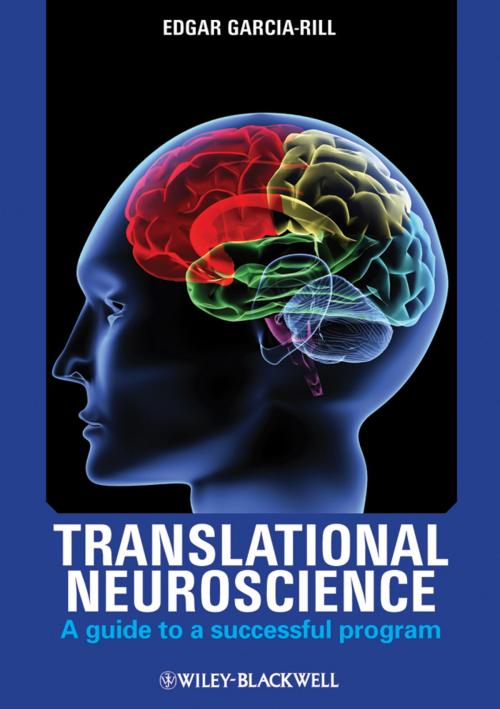Translational Neuroscience
A Guide to a Successful Program
Nonfiction, Health & Well Being, Medical, Specialties, Internal Medicine, Neuroscience| Author: | ISBN: | 9781118260302 | |
| Publisher: | Wiley | Publication: | November 3, 2011 |
| Imprint: | Wiley-Blackwell | Language: | English |
| Author: | |
| ISBN: | 9781118260302 |
| Publisher: | Wiley |
| Publication: | November 3, 2011 |
| Imprint: | Wiley-Blackwell |
| Language: | English |
Translational research looks to take the latest innovations made in the laboratory setting to translate findings into effective and sustainable medical interventions and improved preventative measures. Funding support is increasingly tied to practical healthcare outcomes, with this trend likely only to increase in coming years, Translational Neuroscience: A Guide to a Successful Program, is a timely guide to developing research programs that bring translational advances to the forefront.
Translational Neuroscience provides practical information from scientists with first-hand experience in developing a cutting-edge translational facility. The book opens with chapters that provide guidance to organizing a center for translational science. Chapters look at topics ranging from mentoring and career planning for clinician scientists to improving the design of core facilities and addressing infrastructure needs. The second half of the book provides valuable case studies of translational neuroscience in action, with examples ranging from using to transcranial magnetic stimulation to studies on drug abuse and telemedicine applications. The final chapter looks to the future of basic science research, how academic health centers can be reorganized, and how future generations of translational neuroscientists can be trained.
Translational Neuroscience provides a blueprint to developing an innovative and successful translational research program. Deans, department chairs, academic health center administrators, and researchers will find this guide useful for drafting programs in translational research and avoiding costly pitfalls. While grounded in examples from basic neuroscience research, this book will be a useful tool to all scientists looking to develop centers of translational science across research disciplines.
Translational research looks to take the latest innovations made in the laboratory setting to translate findings into effective and sustainable medical interventions and improved preventative measures. Funding support is increasingly tied to practical healthcare outcomes, with this trend likely only to increase in coming years, Translational Neuroscience: A Guide to a Successful Program, is a timely guide to developing research programs that bring translational advances to the forefront.
Translational Neuroscience provides practical information from scientists with first-hand experience in developing a cutting-edge translational facility. The book opens with chapters that provide guidance to organizing a center for translational science. Chapters look at topics ranging from mentoring and career planning for clinician scientists to improving the design of core facilities and addressing infrastructure needs. The second half of the book provides valuable case studies of translational neuroscience in action, with examples ranging from using to transcranial magnetic stimulation to studies on drug abuse and telemedicine applications. The final chapter looks to the future of basic science research, how academic health centers can be reorganized, and how future generations of translational neuroscientists can be trained.
Translational Neuroscience provides a blueprint to developing an innovative and successful translational research program. Deans, department chairs, academic health center administrators, and researchers will find this guide useful for drafting programs in translational research and avoiding costly pitfalls. While grounded in examples from basic neuroscience research, this book will be a useful tool to all scientists looking to develop centers of translational science across research disciplines.















